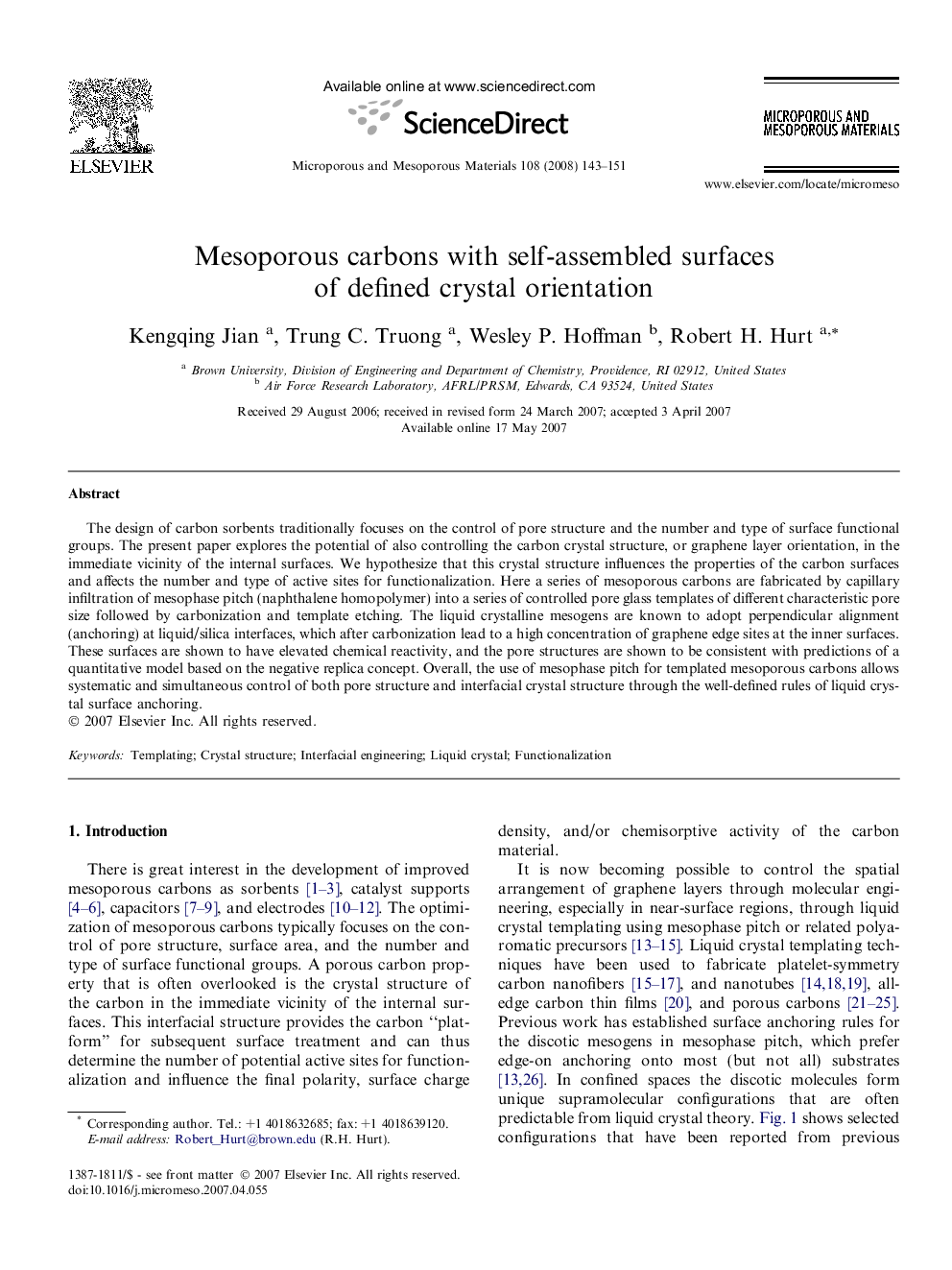| Article ID | Journal | Published Year | Pages | File Type |
|---|---|---|---|---|
| 75984 | Microporous and Mesoporous Materials | 2008 | 9 Pages |
The design of carbon sorbents traditionally focuses on the control of pore structure and the number and type of surface functional groups. The present paper explores the potential of also controlling the carbon crystal structure, or graphene layer orientation, in the immediate vicinity of the internal surfaces. We hypothesize that this crystal structure influences the properties of the carbon surfaces and affects the number and type of active sites for functionalization. Here a series of mesoporous carbons are fabricated by capillary infiltration of mesophase pitch (naphthalene homopolymer) into a series of controlled pore glass templates of different characteristic pore size followed by carbonization and template etching. The liquid crystalline mesogens are known to adopt perpendicular alignment (anchoring) at liquid/silica interfaces, which after carbonization lead to a high concentration of graphene edge sites at the inner surfaces. These surfaces are shown to have elevated chemical reactivity, and the pore structures are shown to be consistent with predictions of a quantitative model based on the negative replica concept. Overall, the use of mesophase pitch for templated mesoporous carbons allows systematic and simultaneous control of both pore structure and interfacial crystal structure through the well-defined rules of liquid crystal surface anchoring.
